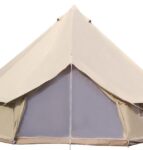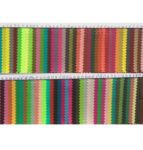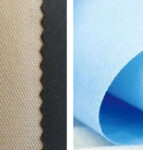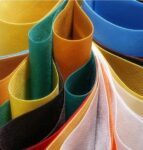Canvas material and duck fabric is one and the same thing. These two terms are basically synonyms. But there are people who seem to think there is a difference between the two. The uck’ in this case is derived from the Dutch term oek’, which means inen canvas.’ Over time, the words duck cloth or duck canvas became popular.
So based on this you should realize that there is no difference between the terms canvas material’ and duck fabric.’ Some people also use the term linen duck, but that did not catch on for some reason.
Anyway, duck fabric has been around for quite a long time. But trying to compare duck cloth against canvas is essentially comparing a type of fabric against itself.
What sets canvas apart from other heavy forms of fabric such as denim is that it has plain weaves instead of twill weaves. So, the claim that duck canvas has tighter weaving than other kinds of canvas is not really an issue. A the end of the day, duck canvas or duck fabric is still canvas material.
Now that we have discovered canvas and duck are one and the same thing, it is time we took a closer look this fabric and some of its defining characteristics. This material has a multiplicity of uses, and it has experienced some changes over time. For instance, it was first made from natural cotton, which is no longer the case. Here are more things you should know about duck fabric.
Properties of Canvas Material/Duck Fabric
1. Fabric Type
Originally, canvas material was completely made of cotton. But that is no longer the case. Some forms of canvas today are made using other fiber blends, for instance, synthetic fibers like nylon and polyester. However, even while they incorporate these man-made materials, they are still made using natural cotton. But anyway, since this type of fabric can be made with both cotton and other materials, today we have canvas fabrics such as polyester canvas in addition to cotton canvas.
2. Canvas Material Styles
Duck canvas has many styles. In the past, you could hear of army, sail, and even belting canvas. However, several other categories are in existence today. In addition to these styles of canvas, we also have single filled cotton duck fabric, which is used to make liners, bags, industrial covers, and even slipcovers.
The reason there are so many styles of canvas today is that people keep on finding popular new uses for this fabric material. For instance, the fabric is used in the shoemaking industry to make canvas foot ware, and it is also popular in the quilting industry. Consequently, there are over a dozen canvas duck styles as we speak, and that goes to show how popular this fabric material is.

3. Usage
Cotton duck canvas has many uses in a multiplicity of industries. For instance, it can be used to make bags, conveyor belts, tents, sofas, water hoses, army clothes, boots, mattress covers, furniture upholstery, bookbinding, coats, canvas footwear, purses, filter cloths, tarps, and so on. And, as you know, many artistic masterpieces in the world today are painted on canvas. The list of uses canvas is currently being used in goes on and on.
4. Weight
Some types of canvas are light in weight, while others are much heavier. Generally, canvas is categorized in terms of weight based on a numerical system. Grade 1 is the heaviest kind of canvas, while grade 12 is the lightest. An example of lightweight canvas is single filled cotton fabric duck, which is used to make things like bags, slipcovers and even liners.In the marketing there are 6 oz,8 oz,10 oz,12 oz,14 oz,16 oz 18 oz,20 oz 22 oz and 24 oz canvas for different purpose of bag.
On the other hand, the canvas that is described as the belting sort is usually quite heavy, and it is used in the making of conveyor belts. This kind of canvas is very strong and thick, and it is ideal in cases where the material is expected to withstand a lot of wear and tear. In general, there is lightweight canvas and heavyweight canvas, and the most suitable choice depends on the intended use of this material.
Obviously, if you need something that can withstand a lot of wear and tear, then the heavyweight canvas is the better choice. But for more general uses, such as making of coats, lightweight canvas variants can get the job done.
5. Printing
A lot of artworks and designs can be put onto canvas material. A number of methods can be used to print these artworks into canvas material. Digital material is one of the options, and it is much more recent. The process involves a computer being used to create the artwork before being printed onto the fabric’s surface.
Screen printing is much older, and it results in prints that are a little thicker, and the results are usually brighter, even on dark fabrics. Embroidering is also another popular technique used to put designs and artworks into canvas materials. Machines can be used to create embroidery designs on canvas, but it can also be created by hand using a needle or sewing machine.
6. Color
Fortunately, there are few limitations with regard to colors as far as canvas fabrics go. Cotton is white, and that means that with dye, this material can assume whatever color you consider most suitable for you. Originally, canvas tends to have a cream color or a while appearance. But you can dye it to have whatever color or pattern you like.
7. After Process
After weaving the canvas material, it can undergo further processing to attain additional qualities. Waxed canvas has better protection against the elements such as water and dust, and it looks better as well. Therefore, waxing is also a great processing technique for types of canvas that could benefit from a more refined and premium look.
The wax also adds to the durability of canvas material. Waxing obviously helps to waterproof canvas, but there are other ways to achieve this effect as well. For instance, alum powder and detergent method can be used to waterproof canvas. Turpentine can also be used to process the canvas and waterproof it, and so can soybean oil and even waterproofing sprays.
Conclusion
Generally, canvas is an exceptionally durable plain-woven fabric with a broad range of uses. For this reason, it is the go-to option in cases where a strong material is required, such as when making tents and conveyor belts and army clothing. Above are some things you should know about duck canvas.



